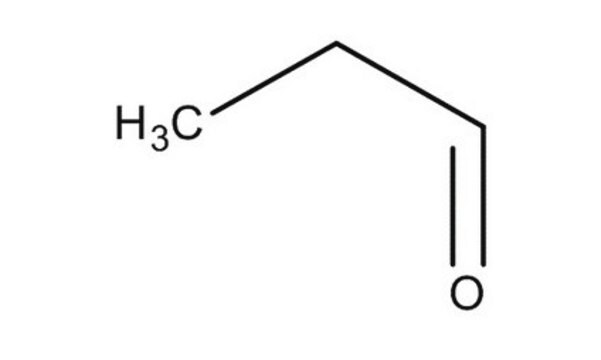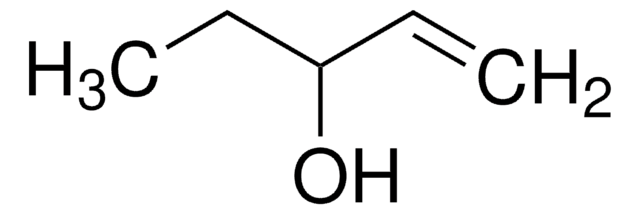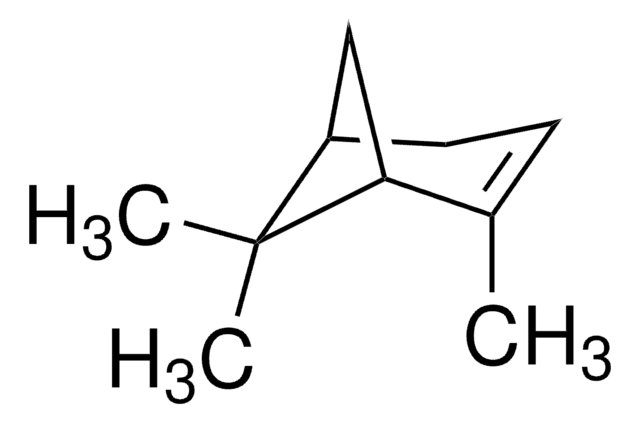おすすめの製品
蒸気密度
2 (vs air)
蒸気圧
18.77 psi ( 55 °C)
4.89 psi ( 20 °C)
アッセイ
97%
自己発火温度
404 °F
expl. lim.
17 %, 26 °F
2.6 %, 31 °F
屈折率
n20/D 1.362 (lit.)
bp
46-50 °C (lit.)
mp
−81 °C (lit.)
密度
0.805 g/mL at 25 °C (lit.)
保管温度
2-8°C
SMILES記法
[H]C(=O)CC
InChI
1S/C3H6O/c1-2-3-4/h3H,2H2,1H3
InChI Key
NBBJYMSMWIIQGU-UHFFFAOYSA-N
類似した製品をお探しですか? 訪問 製品比較ガイド
包装
シグナルワード
Danger
危険有害性の分類
Acute Tox. 4 Inhalation - Acute Tox. 4 Oral - Eye Dam. 1 - Flam. Liq. 2 - Skin Irrit. 2 - STOT SE 3
ターゲットの組織
Respiratory system
保管分類コード
3 - Flammable liquids
WGK
WGK 1
引火点(°F)
-22.0 °F - closed cup
引火点(℃)
-30 °C - closed cup
個人用保護具 (PPE)
Eyeshields, Faceshields, Gloves
適用法令
試験研究用途を考慮した関連法令を主に挙げております。化学物質以外については、一部の情報のみ提供しています。 製品を安全かつ合法的に使用することは、使用者の義務です。最新情報により修正される場合があります。WEBの反映には時間を要することがあるため、適宜SDSをご参照ください。
消防法
第4類:引火性液体
第一石油類
危険等級II
非水溶性液体
労働安全衛生法名称等を表示すべき危険物及び有害物
名称等を表示すべき危険物及び有害物
労働安全衛生法名称等を通知すべき危険物及び有害物
名称等を通知すべき危険物及び有害物
Jan Code
P51451-BULK:
P51451-2.5L:
P51451-2ML:
P51451-250ML:
P51451-25KG:
P51451-2L:
P51451-500ML:
P51451-1L:
P51451-25ML:
この製品を見ている人はこちらもチェック
ライフサイエンス、有機合成、材料科学、クロマトグラフィー、分析など、あらゆる分野の研究に経験のあるメンバーがおります。.
製品に関するお問い合わせはこちら(テクニカルサービス)









